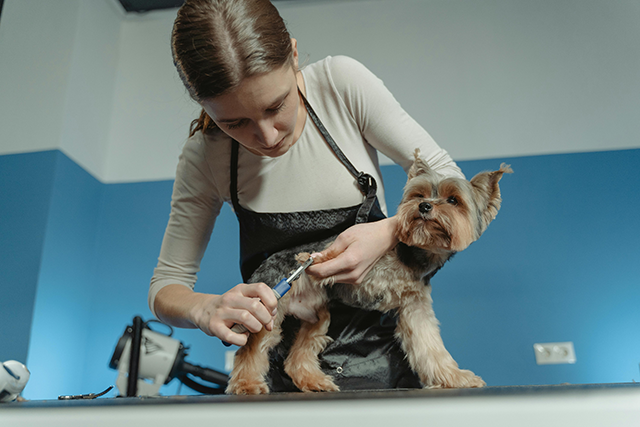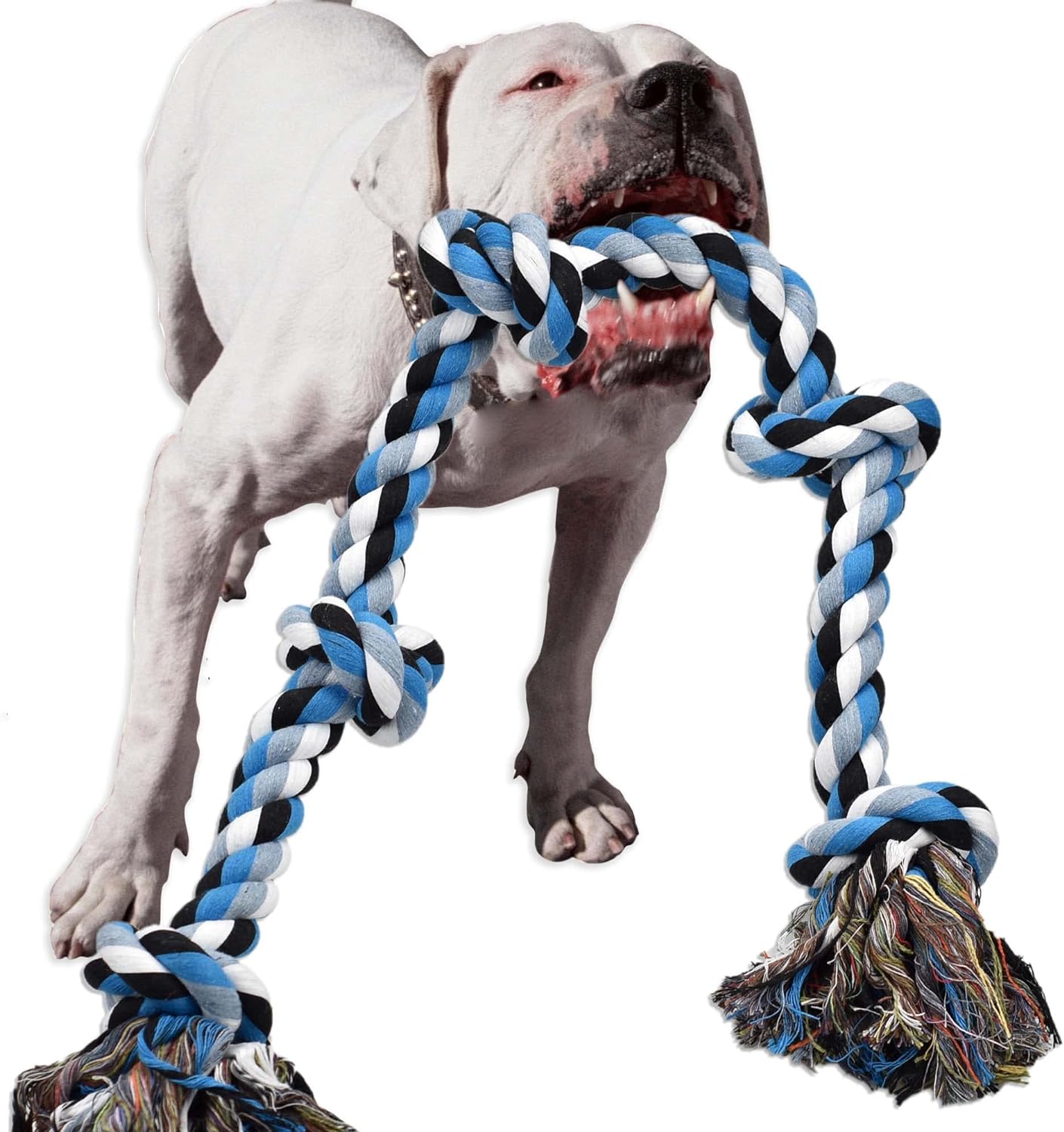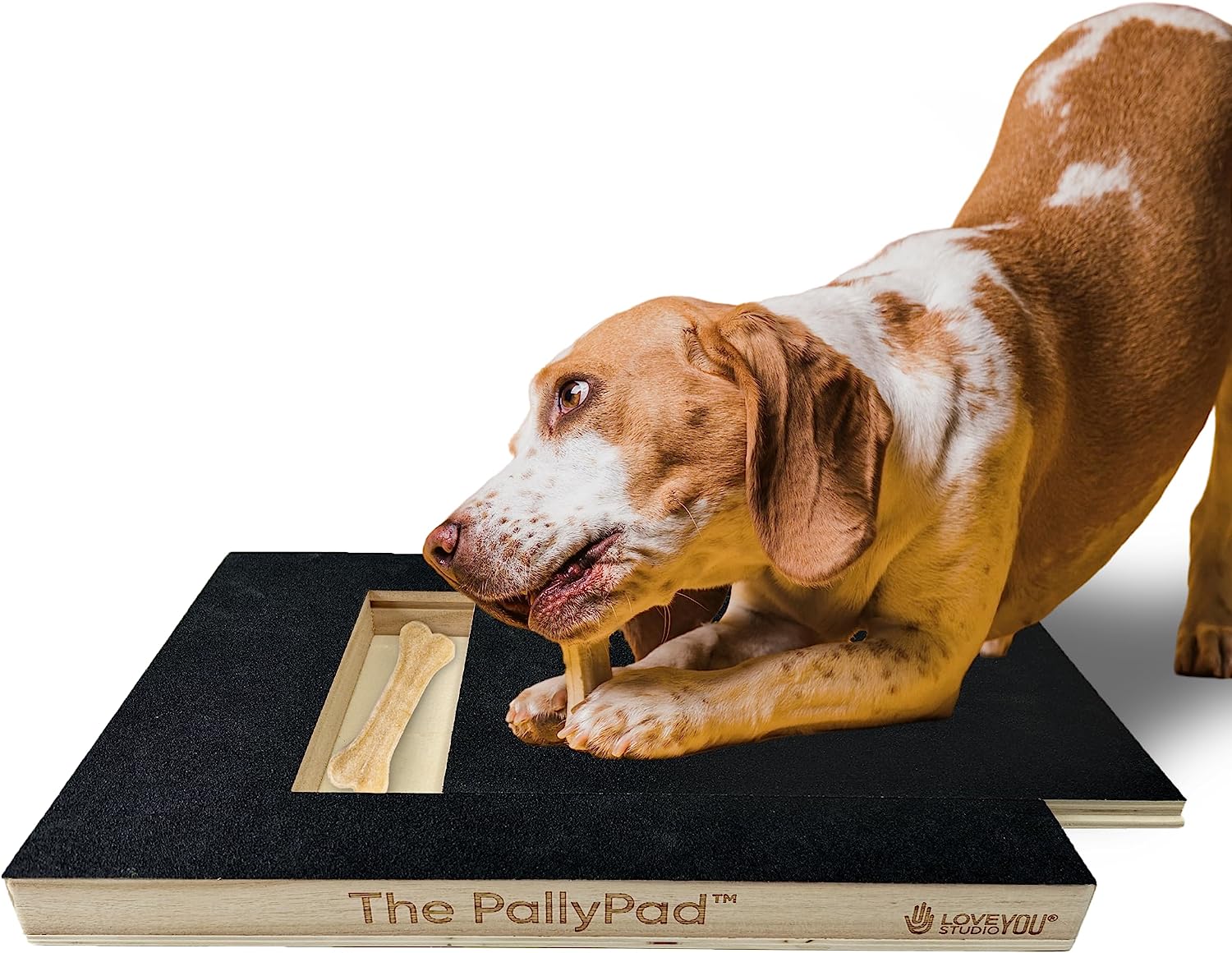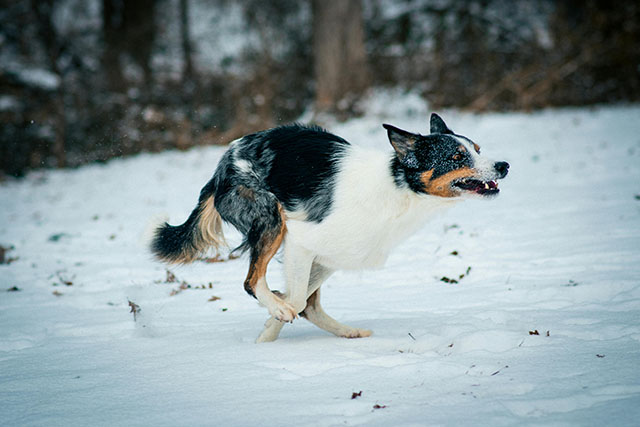Keeping your furry friend’s nails short and well-maintained is crucial for their comfort and mobility. However, the very thought of clipping can send shivers down the spine of many pet owners and their dogs alike.
The good news is, several alternative methods can keep your dog’s nails at a healthy length without the stress and potential discomfort of clipping. Whether your dog is clipper-shy or you’re simply looking for a gentler approach, this guide will introduce you to a variety of effective strategies to ensure your pet’s paws remain in tip-top shape, all without the need for traditional nail trimming tools.
Can Dogs Shorten Their Own Nails?
Indeed, dogs can naturally help keep their nails short to some extent. One natural method involves regular walks on hard surfaces, like sidewalks or pavement, which can naturally file down their nails.
This process is akin to an automatic nail filing session that happens simply by engaging in their daily walks. It’s a low-effort strategy that helps maintain your dog’s nail length and provides them with much-needed exercise and stimulation. However, while this method can aid in the nail maintenance routine, it might not be sufficient for all dogs, especially those that are less active or have faster nail growth.
Thus, monitoring and additional nail care might still be necessary to keep their nails at the optimal length for health and comfort.
How Can I Shorten My Dog’s Nails Naturally?
You’re in luck if you’re seeking natural methods to maintain your dog’s nails. Here are some helpful strategies that can be incorporated into your dog’s routine to help keep their nails short, aside from taking regular walks on hard surfaces:
- Playtime on Abrasive Surfaces: Encourage play on surfaces that naturally wear down nails, such as concrete or asphalt. A game of fetch or tug-of-war on these textures can double as a nail-filing session. Tough Rope Chew Toys are crafted from natural, washable cotton, ensuring safety for your pet during chewing and playtime. These virtually indestructible dog toys will entertain your furry friend for hours.
- Use of a Sandpaper Mat: Attach sandpaper to a board to create a DIY nail-filing mat, or use a commercially available dog nail-filing mat such as The ‘PallyPad’ Scratch Square. Train your dog to scratch on the mat with its paws, which can gently file its nails over time.
- Interactive Toys and Treats: Some toys and treat-dispensing puzzles encourage dogs to use their paws more actively, which can contribute to natural nail filing. Look for toys that are both engaging and durable for extended play.
- Natural Chewing Opportunities: Chewing is a natural behavior for dogs that can also help with nail care. Providing your dog with safe, appropriate chew toys or bone treats like EcoKind Yak Cheese Dog Chews can encourage them to take positions that naturally wear down their nails.
- Regular Inspections and Mindful Maintenance: While using these natural trimming methods, check your dog’s nails regularly to ensure they’re not overgrowing or causing discomfort. Even with natural wear, some dogs may occasionally require a trim to maintain optimal nail health.
By integrating these natural methods into your dog’s routine, you can minimize the need for traditional clipping, making nail maintenance a stress-free part of pet care.
Is There a Way to Stop Dog Nails from Growing?
Unfortunately, there isn’t a way to completely stop a dog’s nails from growing, as it is a natural and necessary part of their biology. Nails are protective coverings that aid in gripping and can serve as tools for various activities such as digging. However, there are steps you can take to manage the rate at which your dog’s nails grow, ensuring they remain healthy and comfortable. Here are a few tips:
- Maintain a Healthy Diet: Just like in humans, a dog’s diet can impact their overall health, including the rate at which their nails grow. Ensure your dog is receiving a balanced diet rich in essential nutrients. Sometimes, excessive nail growth can be a sign of nutritional imbalance.
- Regular Exercise: Frequent walks on hard surfaces naturally help to file down a dog’s nails. More active dogs often have slower nail growth because their daily activities continually wear down their nails.
- Proper Hydration: Keeping your dog well-hydrated is also key to maintaining healthy nails. Just like in humans, a dog’s hydration level can influence the condition of their nails, potentially affecting growth rates and brittleness.
While these methods won’t stop nail growth, they can help manage it, ensuring your dog’s nails stay at a comfortable length with minimal need for intervention.
How Do I Calm My Dog Enough to Cut His Nails?
Calming an anxious dog before a nail-trimming session is key to a smooth and stress-free experience for the pet and the owner. Here are several strategies to help relax your dog and make nail cutting less daunting:
- Create a Calm Environment: Choose a quiet, comfortable space for nail trimming. Avoiding loud noises and distractions can help keep your dog relaxed.
- Positive Reinforcement: Use treats and praise to make the experience as positive as possible. Rewarding your dog for calm behavior before, during, and after the nail-trimming can associate the activity with happy feelings.
- Slow Introduction: Gradually acclimate your dog to the nail trimmer by allowing it to sniff and inspect the tool without using it first. Praise and treat your dog for calm behavior during these introductions.
- Desensitization and Counterconditioning: Gently handle your dog’s paws regularly, not just during nail trimming. This can desensitize them to the sensation of having their paws touched, making them less likely to react negatively.
- Practice Touching the Paws: Touch and lightly press each toe, rewarding your dog for allowing this. It prepares them for the feel of nail trimming without the stress of the actual act.
- Short Sessions: Short trimming sessions and only doing a few nails at a time can prevent stress build-up. If your dog becomes too anxious, it’s okay to pause and try again later.
- Use of Calming Aids: Consider using pheromone diffusers, calming chews, or a weighted anxiety vest to help reduce your dog’s anxiety levels before starting the nail trimming.
- Seek Professional Help: If your dog’s anxiety over nail trimming is severe, consult a veterinarian or a professional dog trainer. They can provide more targeted strategies for calming your dog or suggest professional grooming services where nail trimming can be done more safely.
Implementing these approaches can create a more positive nail-trimming experience. Remember, patience and consistent positive reinforcement are key to helping your dog overcome their anxiety surrounding nail cutting.
What Happens If Dogs’ Nails Are Too Long?
When a dog’s nails become too long, it can lead to a range of uncomfortable and potentially serious issues. Here are several consequences of neglecting regular nail maintenance:
- Pain and Discomfort: Long nails can cause pain and discomfort for a dog, especially when they press against hard surfaces while walking or running.
- Altered Gait: Overgrown nails can lead to an unnatural walking pattern, potentially causing joint pain and changes in posture.
- Injury Risk: Long nails are more prone to splitting or breaking, which can be painful and may lead to infections.
- Difficulty Walking: Dogs with overly long nails may have difficulty maintaining a normal gait, affecting their ability to walk and run comfortably.
- Infections: A long nail splits or breaks can expose the nail bed, leading to infections that may require veterinary treatment.
- Damage to Furniture and Flooring: Beyond health concerns for the dog, long nails can scratch and damage floors, furniture, and even the pet owners themselves.
By understanding these consequences, pet owners should recognize the importance of maintaining regular nail care routines to ensure their dogs’ health and comfort.
Keeping Your Dog Happy and Healthy Through Regular Nail Care
Regular nail maintenance is much more than a cosmetic concern for dogs—it’s a critical component of their overall health and well-being. Neglecting nail care can lead to a host of problems, from physical discomfort and mobility issues to severe infections. Implementing a routine that includes proper nutrition, regular exercise, and gentle grooming practices can significantly improve the condition of your dog’s nails and, by extension, their quality of life.
The goal is to ensure nail trimming becomes a positive, stress-free experience for you and your furry friend. With patience and the right approach, maintaining your dog’s nail health can easily become a regular part of your bonding time, ultimately leading to a happier and healthier pet.
Jessica is a veterinary medicine student who is passionate about animals. Living with her cherished dog, Milo, deepens her understanding of the human-animal connection, enhancing her empathy as a future veterinarian.
Jessica’s concise articles reflect her dedication to improving the lives of animals and those who care for them, making her an inspiring figure in the pet care field.







